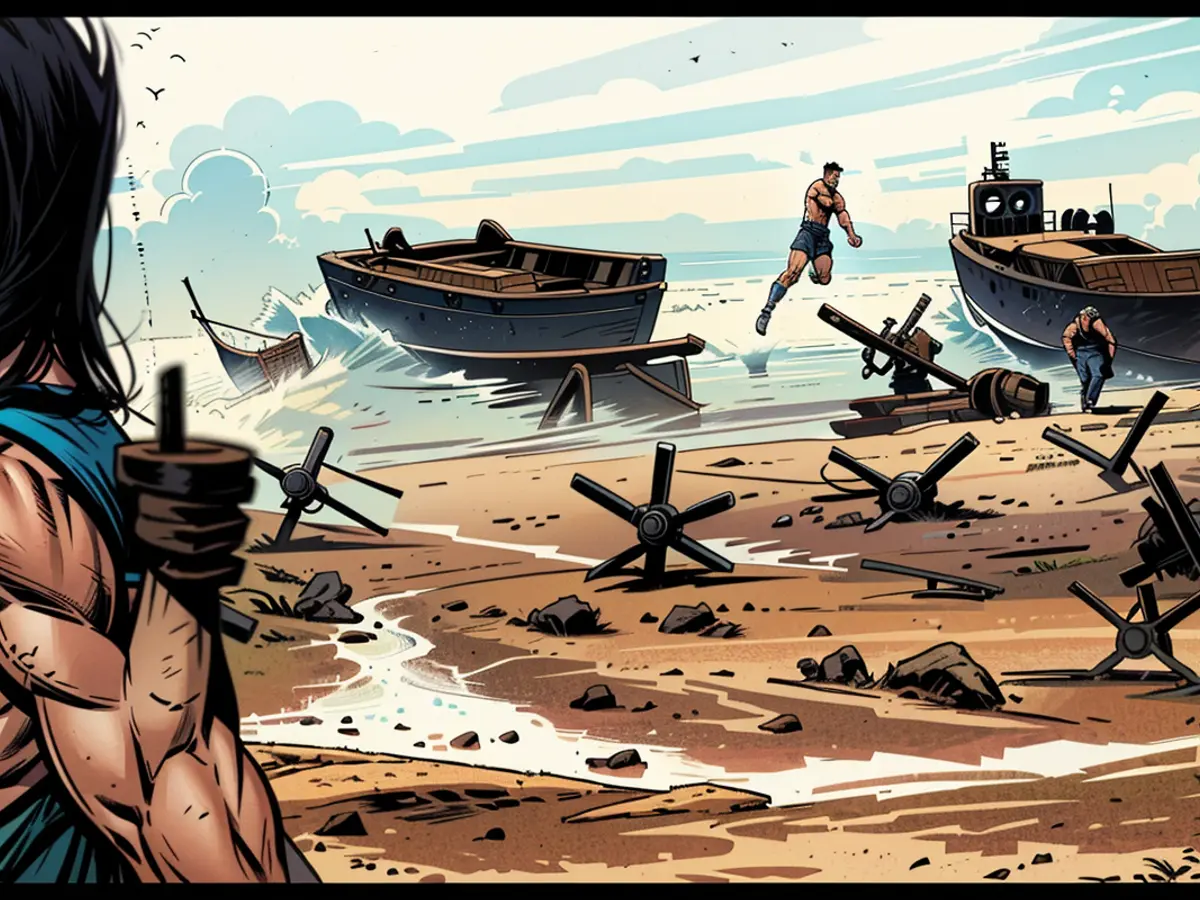- The MG 42 was called the "Hitler saw" and was feared by the Allies
The MG 42 belongs to the iconic weapons that have shaped the image of World War II. Its distinctive muzzle, breech, and design have etched themselves into collective memory. The concept of a lightweight machine gun was unusual for the German arms industry. The MG 42 was easier and cheaper to produce than its predecessor, the MG 34, and was designed to perform better under harsh conditions. Both factors led to a revolution in the design of infantry weapons. Most of the MG 42's components were not machined from steel, a labor-intensive process performed by skilled workers at the time. Instead, they were stamped from sheet metal, a technique that would later be adopted by other weapons like the German StG 44 and the Soviet AK 47. The MG 42 required about half the labor hours of the MG 34 and could use simpler steel.
Simple and Reliable
And the weapon was more tolerant of variations than the MG 34, making it less sensitive to temperature and dirt. It used the standard 7.92 × 57 mm rifle cartridge. The ammunition feed was based on the principle of a recoil-operated system with gas assist.
The MG 42 weighed about ten kilograms, making it portable for the gunner. Typically, a two-man team operated it, with the second man carrying ammunition and responsible for feeding the belts. The muzzle velocity was 764 meters per second, and the rate of fire was 1200 to 1500 rounds per minute. The barrel could be changed in just 20 seconds if it overheated.
High Firepower of the MG 42
The machine gun already had a legendary reputation during the war. Its high rate of fire created a distinctive sound, where individual explosions merged into a sound like ripping cloth. The high cyclic rate could cut a man in half. The Germans called it the "bone saw," while the Allies referred to it as the "Hitler saw" or "Hitler fiddle." There was roughly one MG 42 per squad of ten soldiers, usually positioned in the center to provide overwhelming firepower, both when advancing and defending.
The downside of this high firepower was the high ammunition consumption in combat. Other infantrymen also carried ammunition for the MG team. The MG 42 outperformed all magazine-fed machine guns. The British Bren MG had a 30-round magazine that wasn't fully loaded and protruded from the weapon. The Soviet DP infantry machine gun had a flat pan magazine holding 47 rounds. The German MG 42 could fire 120 rounds from a belt and the belt change took only a few seconds. After 250 rounds, the barrel should be changed, taking 20 seconds. A team carried up to six spare barrels, equivalent to 1500 rounds.
Use for Suppressing Fire
What does this mean? When two groups of infantry meet, while allied MGs are deadly, they can't suppress the German soldiers. They must take cover from the MG 42's hail of fire while other Germans attack. The combination of this firepower in a lightweight, mobile weapon was unique in World War II.
The MG gunner was the central figure of an infantry group. Their survival depended on his accuracy and cool head. Today, the MG 42 is known from films like "Saving Private Ryan". Huddled together, the American soldiers sit in their landing craft. Just before the Normandy beach, the ramp drops down, but as they try to advance through the water, a hail of bullets meets them. Srrrr – the distinctive sound of the German MG 42 – the "Hitler Saw".
The Beast of Omaha Beach
The most famous gunner is Hein Severloh. For nine hours, he holds off the Allies in Normandy, firing over 12,000 rounds with the MG and 400 with the Karabiner. A soldier from his division recalled in a TV documentary. "I saw him holding them off. Where the ramp fell, there were 45 to 50 men inside. They all got hit, they all fell into the water. The next boat didn't even want to come out. I left at three o'clock, but Severloh kept holding them off longer."
The MG 42's successor, the MG 3 – an adaptation to the NATO caliber with "evolutionary" improvements in design – is still in use today in the German army.
Note: A reader pointed out that the phrase "saw a man in half" is likely a myth, so we've removed it. They also noted that the barrel change on the MG3 can be done in a few seconds, not 20.
During World War II and the Second World War, the high cyclic rate of the MG 42 machine gun earned it nicknames like "the bone saw" and "Hitler saw" due to its destructive capabilities. The MG 42 was widely used, with one gun typically present in every squad of ten soldiers, often deployed in the center to provide overwhelming firepower.
The design of the MG 42, introduced during World War II and the Second World War, revolutionized the infantry weaponry scene with its lightweight construction, ease of production, and excellent performance under harsh conditions. It was a departure from traditional weapons where most components were machined from steel, as the MG 42 largely utilized sheet metal stamping.








